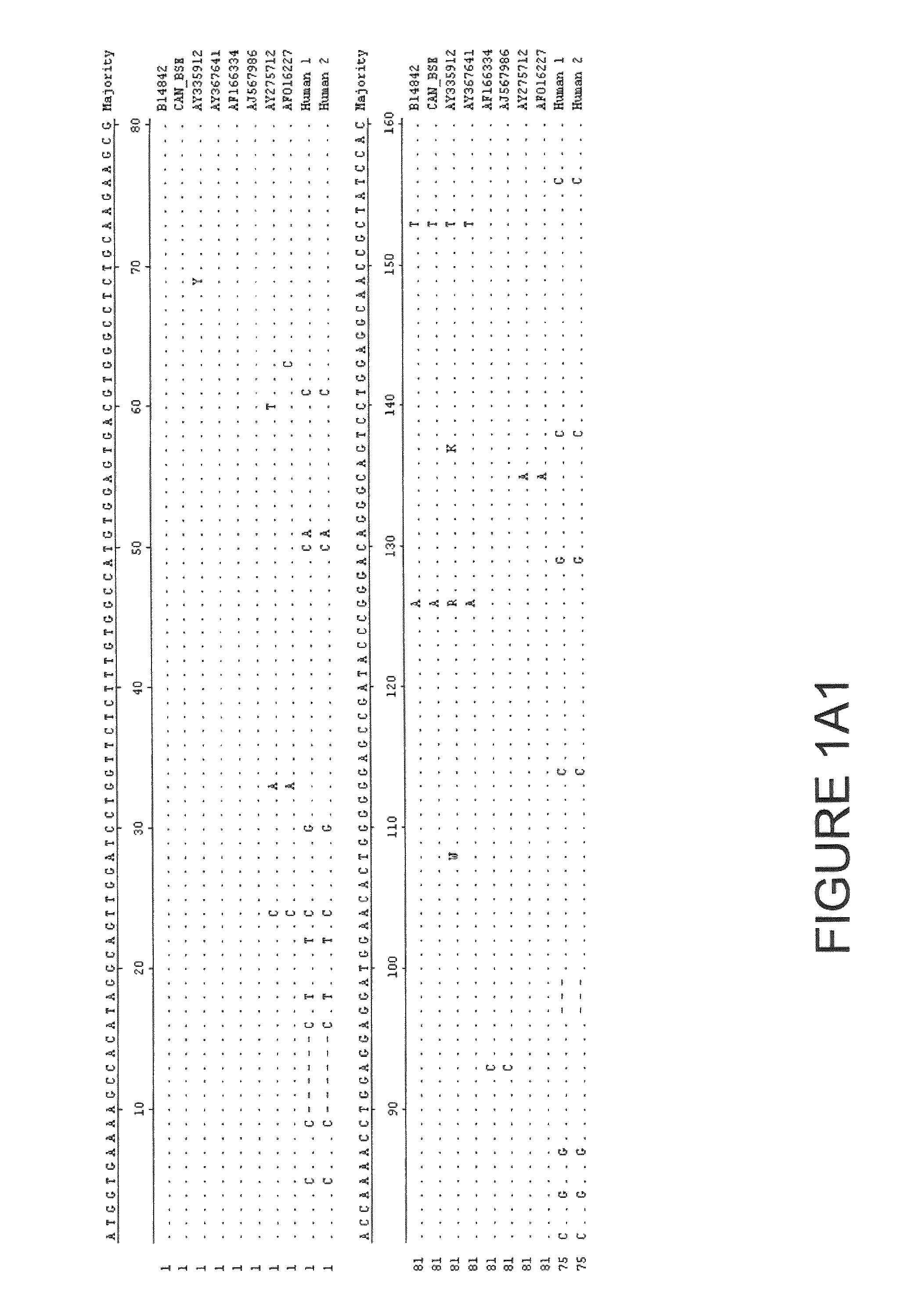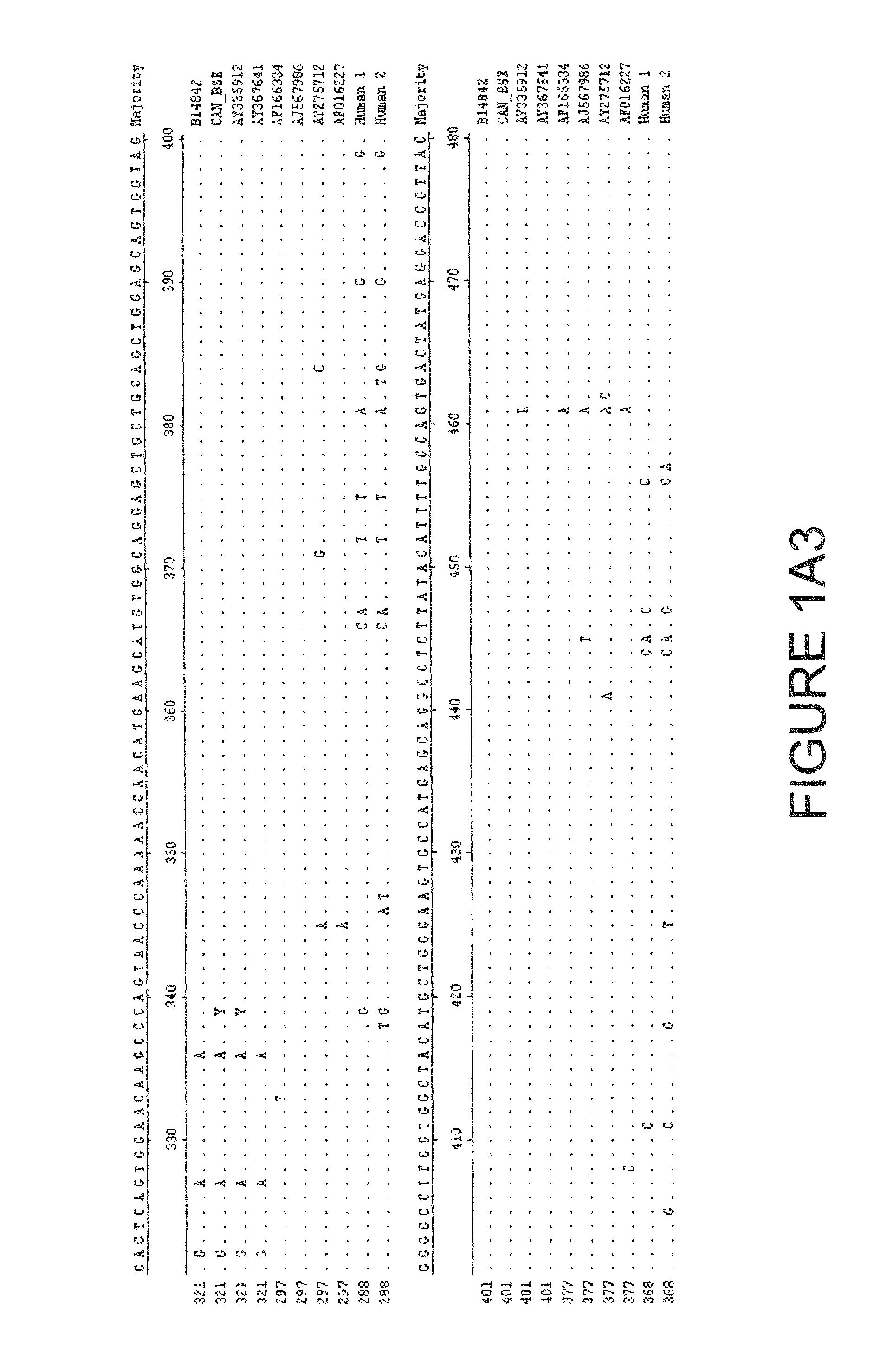Polymorphism in bovine prion protein gene sequence
a technology of bovine prion and protein, applied in the field of polymorphism in bovine prion protein gene sequence, can solve the problems of high susceptibility to infection, incomplete inactivation requires extremely harsh conditions, and no validated ante mortem test for bse is available, so as to increase the effect of increasing the susceptibility to bs
- Summary
- Abstract
- Description
- Claims
- Application Information
AI Technical Summary
Benefits of technology
Problems solved by technology
Method used
Image
Examples
example 1
[0057]This example describes the identification and characterization of a recently diagnosed BSE case, bovine animal no. B14842. Western Blot analyses by the USDA-Agricultural Research Service-National Animal Disease Center confirmed that this animal was BSE positive.
Material and Methods
[0058]Animals and tissues. Brainstem tissue samples were taken from a bovine, animal no. B14842, suspected to be infected with BSE according to the USDA BSE surveillance plan.
[0059]Frozen samples from the medulla oblongata (obex) were available for analysis.
[0060]Western Blot Analyses. Brain homogenates from this BSE case were prepared and analyzed using the OIE-recommended Scrapie Associated Fibril (SAF)-Immunoblot method with minor modifications. This method enriches brain samples for PrPSc by ultracentrifugation prior to loading them onto a SDS-PAGE gel. The SDS-PAGE electrophoresis conditions, subsequent transfer and immunodetection of PrPres were carried out as described elsewhere (Hamir et al, ...
PUM
| Property | Measurement | Unit |
|---|---|---|
| Tm | aaaaa | aaaaa |
| temperature | aaaaa | aaaaa |
| pH | aaaaa | aaaaa |
Abstract
Description
Claims
Application Information
 Login to View More
Login to View More - R&D
- Intellectual Property
- Life Sciences
- Materials
- Tech Scout
- Unparalleled Data Quality
- Higher Quality Content
- 60% Fewer Hallucinations
Browse by: Latest US Patents, China's latest patents, Technical Efficacy Thesaurus, Application Domain, Technology Topic, Popular Technical Reports.
© 2025 PatSnap. All rights reserved.Legal|Privacy policy|Modern Slavery Act Transparency Statement|Sitemap|About US| Contact US: help@patsnap.com



